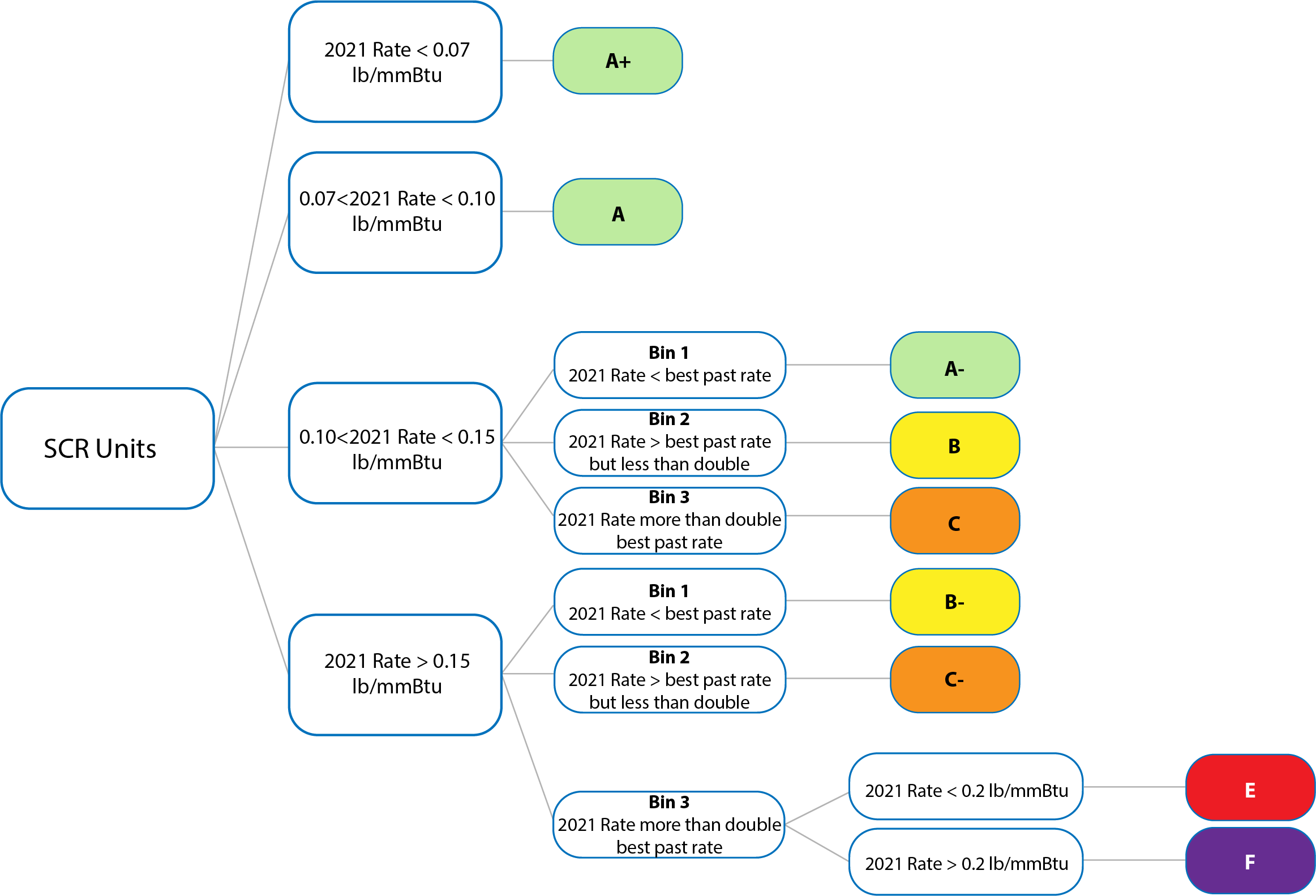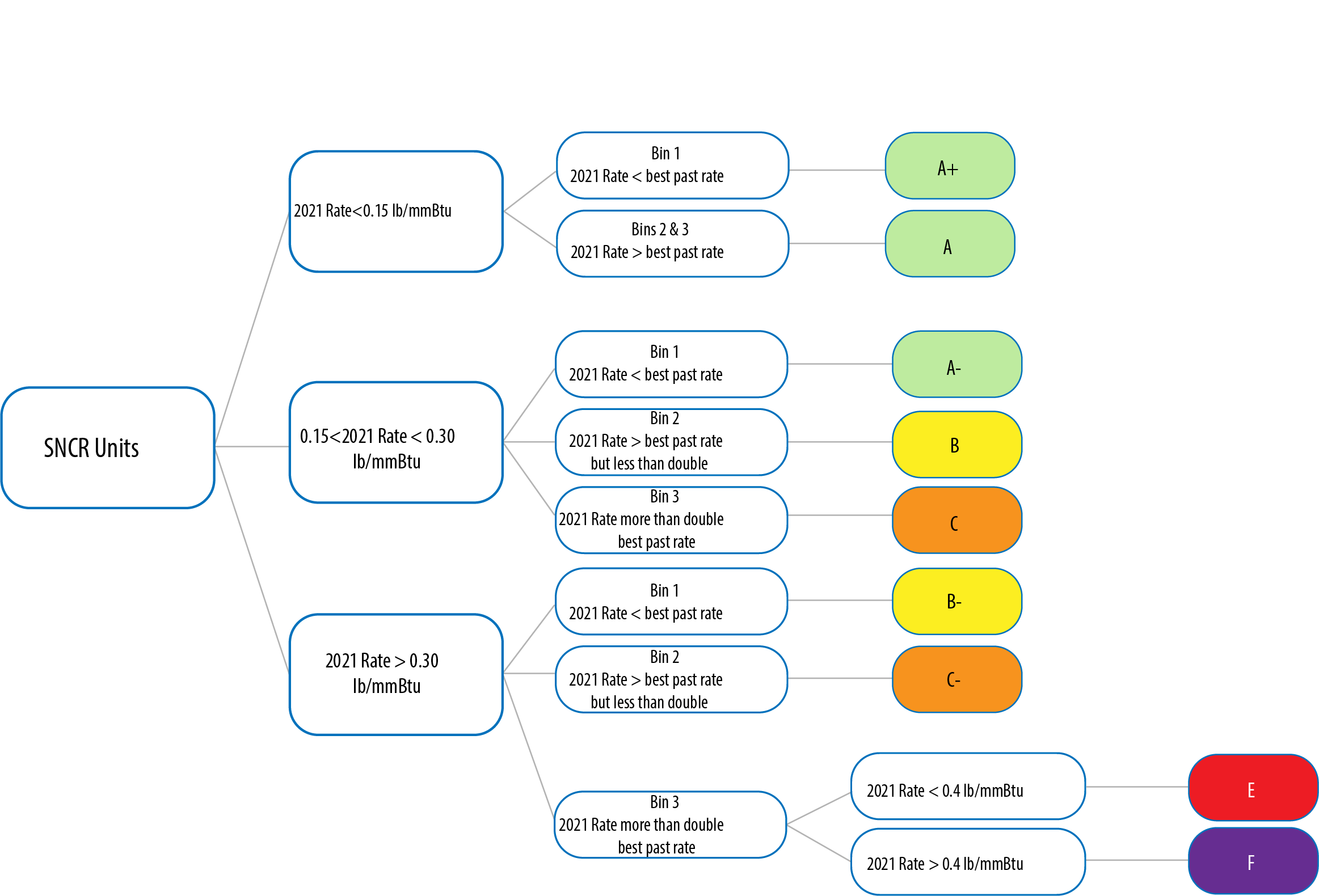Beginning in 2016, MDE received feedback indicating that many coal-fired EGUs cannot consistently achieve their historical best NOx emission rates due to changes in operating patterns -- i.e. because the units are operating at lower capacity levels. The concept is that lower capacity
requires units to operate at lower heat inputs, resulting in lower flue gas temperature, which leads to low SCR efficiency.

According to the concept, the overall result (excluding other controlling factors) is high NOx emission rates and mass. While skeptical of the concepts’ conclusions, MDE recognized a change in operating patterns. To assess this change, MDE also evaluates SCR optimization and NOx reductions as a function of heat input. This approach recognizes that there is a change in operational pattern, and thus calculates optimized NOx at specific heat input levels that corresponds to only what is achievable at that level. Additional information on this methodology is available by clicking here.
Determining Letter Grades
The methodology to distribute letter grades to individual EGUs builds from Maryland's 2021 ozone sseason analysis of control optimization at coal-fired EGUs with Selective Catalytic Reduction (SCR) and Selective Non-catalytic Reduction (SNCR) controls across the eastern United States. MDE developed a grading system based on individual EGU performance rates.
Binning Methodology
MDE assessed SCR/SNCR control optimization for a specific year by comparing ozone season data for that year to a series of NO
x emissions rates reflecting various levels of optimization for each unit. These optimized rates are derived from the units' 2005-2020 ozone season data (adjusted if controls were installed after 2005), available in the EPA's Air Market Programs Database. For initial screening, the lowest ozone season average NO
x emission rate was selected for each unit. If the unit installed an SCR or SNCR in 2005 or a later year, the data collection period was narrowed to the first ozone season in the year following the installation to 2020.
A deviation percentage was then calculated for each unit by dividing the current ozone season average emission rate by the identified best ozone season average emission rate. Units were the subdivided into three categories, or bins, based on the calculated percent deviation. Each of these bins represents a different level of optimization based on the unit's own previously demonstrated performance.
Description of Three Bins for EGU Optimization Performance
1
| <0%
| 2021 NOx rate is less than past best rate. Equal or better performance compared to past.
|
2
| 0-100%
| 2021 NOx rate is greater than past best rate but less than double. Slightly poorer performance compared to past
|
3
| >100%
| 2021 NOx rate is more than double past best rate. Noticeably poorer performance compared to past
|
Grading Scale
While MDE's binning methodology allows comparison of a unit's control performance in a particular year to its own previously demonstrated capabilities, it does not allow comparison of units to each other. In order to assign a letter grade to each unit, MDE used the binning methodology in conjunction with performance rates for SCR and SNCR technologies to provide an indication of the unit's overall efforts to optimize controls. The following charts illustrate the methodologies for grading EGU units. The methodologies are identical but with different rate performance standards for SCR and SNCR units. Under this methodology, any SCR unit that achieved a 2021 rate less than 0.10 lb/mmBtu and any SNCR unit under 0.15 lb/mmBtu would receive a grade of A or A+ depending on its designated bin.
Grading Strategy for SCR Units

Grading Strategy for SNCR Units

